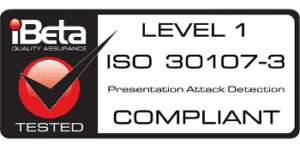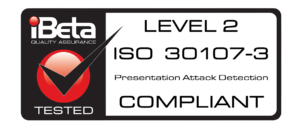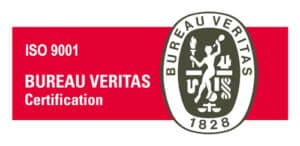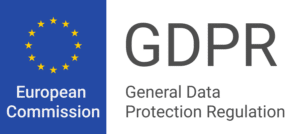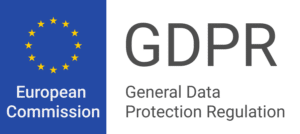What is CDD
Definition and Meaning of Customer Due Diligence (CDD)
Customer Due Diligence (CDD) embodies a crucial process in financial institutions, focusing on assessing and comprehending customers’ backgrounds and associated risks.
It ensures regulatory compliance, risk mitigation, and prevention of financial crimes. CDD involves meticulous scrutiny of customer identities, business activities, and transactions.
The primary aim is twofold: to validate customer identities and evaluate potential risks linked to their engagements.
By collecting and verifying essential information about customers, institutions categorize them based on risk levels, enabling tailored risk management.
CDD operates within a regulatory framework alongside Know Your Customer (KYC) and Anti-Money Laundering (AML) practices. While KYC validates identities, CDD involves ongoing monitoring and a deeper assessment of customer activities.
It encompasses both standard due diligence for low-risk customers and enhanced due diligence for higher-risk ones, ensuring compliance and proactive risk management.
Ultimately, CDD safeguards financial institutions from illicit activities while upholding the integrity of the financial system.
The Importance of CDD in Banking and Financial Services
Customer Due Diligence (CDD) stands as a cornerstone in banking and financial services, wielding immense importance in safeguarding against financial risks and ensuring regulatory compliance.
Its primary significance lies in mitigating the threat of financial crimes, including money laundering, terrorist financing, and other illicit activities.
By meticulously scrutinizing customer identities, transactions, and business activities, CDD enables institutions to assess risks and categorize customers based on their potential threat levels.
Moreover, CDD plays a pivotal role in upholding the integrity of the financial system by preventing unauthorized or unlawful use of banking services.
Compliance with CDD regulations not only helps institutions avoid penalties and reputational damage but also fosters trust among stakeholders.
Ultimately, the proactive implementation of CDD fosters a secure financial environment, bolstering transparency, trust, and stability within the industry.
Understanding CDD in the Context of KYC and AML
Relationship Between CDD, KYC (Know Your Customer), and AML (Anti-Money Laundering)
The relationship between Customer Due Diligence (CDD), Know Your Customer (KYC), and Anti-Money Laundering (AML) forms a crucial trifecta within the financial sector’s regulatory framework.
KYC serves as the initial step, verifying customer identities and ensuring they’re legitimate and non-fraudulent. CDD, on the other hand, extends beyond KYC, involving a deeper and ongoing scrutiny of customer activities, transactions, and risk assessments.
CDD operates within the broader scope of AML practices, focusing on preventing money laundering and other financial crimes. While KYC establishes the customer’s identity, CDD continuously evaluates and monitors their behavior and transactions to detect suspicious activities that might indicate potential risks associated with money laundering or terrorist financing.
Together, these practices create a comprehensive framework that aids financial institutions in maintaining regulatory compliance, mitigating risks, and safeguarding against illicit financial activities.
Regulatory Framework Governing CDD, KYC, and AML
The regulatory framework governing Customer Due Diligence (CDD), Know Your Customer (KYC), and Anti-Money Laundering (AML) practices constitutes a robust set of guidelines and laws aimed at ensuring the integrity and security of the financial system globally.
Various international bodies, such as the Financial Action Task Force (FATF), set standards and recommendations that countries adopt to combat money laundering and terrorist financing.
National regulatory authorities supplement these international standards with their own rules and regulations, which financial institutions must adhere to.
These regulations encompass requirements for customer identification, verification procedures, risk assessment methodologies, and reporting suspicious transactions.
Moreover, the regulatory framework mandates ongoing monitoring of customer relationships, periodic reviews, and the implementation of appropriate measures based on risk levels.
Compliance with these stringent regulations not only mitigates financial risks but also ensures transparency, trust, and integrity within the financial sector on a global scale.
Customer Due Diligence for Banks
Whate are the 4 stages of customer due diligence?
- Customer Identity Verification: Collect and verify customer identity through reliable documentation to comply with regulatory requirements.
- Understanding the Customer Relationship: Assess the nature and purpose of the customer relationship by analyzing business activities, transactions, and anticipated account usage. This step categorizes customers based on risk levels.
- Ongoing Monitoring: Continuously monitor customer transactions to ensure they align with expected behavior and patterns, identifying any unusual or suspicious activities.
- Periodic Reviews: Conduct periodic reviews to update customer information, reassess risk levels, and verify the ongoing legitimacy of the business relationship. This step ensures that customer profiles remain accurate and up-to-date.
The iterative and adaptive nature of these steps ensures that financial institutions consistently evaluate and mitigate risks associated with their customers while maintaining compliance with regulatory standards.
Standard vs. Enhanced Due Diligence
Standard Due Diligence (SDD) and Enhanced Due Diligence (EDD) represent two tiers within the Customer Due Diligence (CDD) process, each tailored to manage varying levels of risk associated with customers in the financial sector.
SDD involves the standard procedures applied to most customers, focusing on verifying identities, understanding business activities, and assessing risk levels based on regular parameters. It typically applies to low to moderate-risk customers.
In contrast, EDD is a more comprehensive and in-depth investigation reserved for higher-risk customers or situations. This includes gathering additional information beyond the scope of SDD, such as source of wealth, beneficial ownership, and more extensive background checks.
EDD requires a deeper analysis and ongoing monitoring due to the elevated risk associated with these customers.
The distinction between SDD and EDD enables financial institutions to tailor their due diligence measures, allocating resources more effectively based on the varying levels of risk posed by different customers or scenarios.
Ongoing Client Due Diligence and Risk Assessment
Ongoing Customer Due Diligence (CDD) coupled with continuous Risk Assessment forms a dynamic and crucial aspect of the financial sector’s risk management strategy.
While initial due diligence establishes a baseline understanding of customers, ongoing CDD involves monitoring and reassessing these relationships regularly.
This continuous monitoring enables financial institutions to stay abreast of changes in customer behavior, transaction patterns, and potential risk factors.
It allows for the timely identification of any deviations from established norms or suspicious activities, ensuring prompt intervention and risk mitigation.
Simultaneously, regular Risk Assessment helps reevaluate the risk levels associated with customers. It ensures that risk profiles remain accurate and updated, enabling institutions to adjust risk mitigation measures accordingly.
Ongoing CDD and Risk Assessment not only strengthen compliance with regulations but also reinforce the institution’s ability to adapt to evolving risks, safeguarding against financial crimes and maintaining the integrity of the financial system.
Customer Due Diligence Requirements and Compliance
Key Components of Effective Customer Due Diligence Programs
Effective Customer Due Diligence (CDD) programs in the financial sector encompass several key components crucial for robust risk management and regulatory compliance.
Firstly, a comprehensive customer risk assessment framework is pivotal, enabling institutions to categorize customers based on risk levels and apply appropriate due diligence measures.
Accurate customer identification and verification procedures form another cornerstone, ensuring the authenticity of customer identities and compliance with regulatory standards.
Data collection and record-keeping mechanisms facilitate the gathering and maintenance of relevant customer information required for ongoing monitoring and periodic reviews.
Moreover, robust technology infrastructure supporting data analysis and monitoring tools enhances the efficiency and accuracy of CDD programs. Adequate training and expertise for staff handling CDD ensure competence in assessing risks and conducting due diligence procedures.
Lastly, a culture of compliance and adherence to internal policies and regulatory guidelines are vital for the effectiveness of CDD programs, fostering a proactive approach toward risk management within financial institutions.
Compliance with Local and International Regulations
Compliance with both local and international regulations is a cornerstone of effective Customer Due Diligence (CDD) within the financial sector.
Local regulations set forth by national authorities outline specific requirements and standards that financial institutions must adhere to when conducting CDD processes.
These regulations encompass customer identification, verification procedures, risk assessment methodologies, and reporting obligations.
Simultaneously, international regulations, often established by bodies like the Financial Action Task Force (FATF), provide overarching guidelines aimed at combating money laundering, terrorist financing, and other financial crimes on a global scale. They set standards and recommendations that countries and financial institutions worldwide must adopt.
Compliance with these dual sets of regulations demands meticulous attention to detail, robust internal controls, and a proactive approach to risk management.
Financial institutions must ensure that their CDD practices align with both local laws and international standards, fostering transparency, trust, and integrity within the global financial ecosystem.
Challenges and Best Practices in CDD Compliance
Challenges
- Data Management: Handling vast volumes of data and ensuring its accuracy poses a challenge.
- Regulatory Complexity: Keeping up with evolving local and international regulations can be daunting.
- Resource Allocation: Allocating sufficient resources for robust CDD practices is often a challenge.
- Technological Integration: Integrating advanced technology while ensuring data security presents complexities.
- Human Error and Expertise: Relying on human judgment can lead to inconsistencies without adequate training.
Best Practices
- Risk-Based Approach: Implementing a risk-based approach to prioritize higher-risk customers.
- Regular Training: Providing continuous training to staff to enhance expertise in CDD procedures.
- Advanced Technology: Utilizing AI and machine learning for efficient data analysis and monitoring.
- Streamlined Processes: Establishing streamlined and standardized processes across the institution.
- Ongoing Review: Regularly reviewing and updating CDD policies to align with regulatory changes.
Implementing these best practices helps navigate challenges, ensuring effective CDD compliance while mitigating risks within financial institutions.
Customer due diligence checklist
Customer Identification
- First of all, identify the customer.
- Obtain the customer’s full legal name, date of birth, and physical address.
- Collect official identification documents (passport, national ID, driver’s license).
- Verify the accuracy of the information provided and determine their risk profile.
Business Identification (for corporate clients)
- Obtain full legal name of the business.
- Collect registration documents (Certificate of Incorporation, Articles of Association).
- Verify the business address and the individuals authorized to act on behalf of the business.
Purpose and Nature of the Account
- Understand the purpose of opening the account.
- Determine the nature of the customer’s transactions and expected account activity.
Source of Funds and Wealth
- Identify and verify the source of funds used to establish the account.
- Assess the customer’s overall financial profile and wealth.
Politically Exposed Persons (PEP) Check
- Screen the customer against PEP databases to identify any politically exposed persons.
- Apply enhanced due diligence for PEPs.
Risk Assessment
- Assess the risk associated with the customer based on the nature of their account, transaction history, and other relevant factors.
Enhanced Due Diligence (EDD)
- Apply EDD measures for high-risk customers, such as large transactions or complex structures.
- Collect additional information and documentation for high-risk customers.
Ongoing Monitoring
- Implement a system for continuous monitoring of customer transactions.
- Regularly update customer information, especially for high-risk accounts.
Record Keeping
- Maintain comprehensive records of customer identification and due diligence information.
- Ensure compliance with regulatory record-keeping requirements.
Compliance with Legal and Regulatory Requirements
- Stay current with AML and KYC regulations applicable to the banking industry.
- Implement policies and procedures to ensure compliance.
Training and Awareness
- Provide regular training to bank staff on CDD procedures and compliance requirements.
- Foster a culture of compliance and ethics within the organization.
Reporting Suspicious Activities
- Establish procedures for identifying and reporting suspicious transactions.
- Comply with regulatory requirements for reporting to relevant authorities.
Customer Education
- Educate customers about the importance of providing accurate and updated information.
- Inform customers about the bank’s policies related to fraud prevention and AML compliance.
Customer Due Diligence and Risk Management
Identifying and Mitigating Risks Through CDD
Customer Due Diligence (CDD) plays a pivotal role in identifying and mitigating risks within the financial sector. Through meticulous scrutiny of customer identities, transactions, and activities, CDD aids in the early detection of potential risks associated with financial crimes like money laundering, terrorist financing, and fraud.
By employing CDD processes, financial institutions can categorize customers based on risk levels, allowing for tailored risk mitigation strategies.
This proactive approach involves continuous monitoring and assessment, enabling timely identification of suspicious activities or deviations from expected behavior.
Furthermore, CDD facilitates the establishment of risk profiles for customers, allowing institutions to apply appropriate measures to manage and mitigate identified risks. This includes enhanced due diligence for higher-risk customers and the implementation of robust internal controls and policies.
Ultimately, the effective use of CDD helps institutions safeguard against financial risks, maintaining the integrity and security of the financial system.
Role of Customer Due Diligence in Preventing Financial Crimes
Customer Due Diligence (CDD) stands as a frontline defense in preventing financial crimes within the banking and financial sectors.
Its proactive approach in scrutinizing customer identities, business activities, and transactions plays a pivotal role in thwarting illicit activities like money laundering, terrorist financing, and fraud.
CDD enables the early detection of red flags or anomalies in customer behavior, transactions, or account activities.
This vigilance helps financial institutions identify and prevent potential criminal activities before they escalate. By categorizing customers based on risk levels and applying appropriate due diligence measures, CDD aids in mitigating risks associated with higher-risk customers.
Furthermore, ongoing monitoring and periodic reviews ensure continuous assessment and adaptation to evolving risks.
This meticulous oversight helps in maintaining compliance with regulatory standards while fostering a resilient framework against financial crimes. Ultimately, the robust implementation of CDD significantly contributes to preserving the integrity and security of the financial system.
Technological Advancements in Customer Due Diligence
Digital Solutions for Efficient Customer Due Diligence Processes
Digital solutions have revolutionized Customer Due Diligence (CDD) processes within the financial sector, offering unprecedented efficiency and accuracy.
Advanced technologies streamline data collection, verification, and analysis, significantly enhancing the speed and precision of CDD procedures.
Robust digital platforms facilitate the automation of routine tasks, such as customer identity verification and transaction monitoring, reducing manual workload and minimizing errors.
Artificial Intelligence (AI) and Machine Learning (ML) algorithms enable swift analysis of vast datasets, allowing for the identification of complex patterns and anomalies that might indicate potential risks.
Moreover, these digital solutions support real-time monitoring, providing continuous oversight of customer activities for prompt identification of suspicious behavior.
Additionally, cloud-based systems offer scalability and flexibility, enabling institutions to adapt and scale their CDD processes efficiently.
Overall, leveraging digital solutions in CDD not only boosts operational efficiency but also strengthens risk management capabilities, ensuring compliance with regulations and enhancing the resilience of financial institutions against emerging threats.
The Role of AI and Machine Learning in Enhancing CDD
AI and Machine Learning (ML) have emerged as powerful tools revolutionizing Customer Due Diligence (CDD) within the financial sector.
These technologies bolster CDD processes by automating tasks, accelerating data analysis, and fortifying risk detection capabilities.
AI algorithms enable swift analysis of extensive datasets, facilitating the identification of intricate patterns and anomalies that might indicate potential risks.
ML models continuously learn from data, adapting and improving their ability to recognize evolving trends and suspicious behaviors, enhancing the accuracy of risk assessments.
Furthermore, AI-powered systems support real-time monitoring, enabling prompt detection of irregular activities and deviations from expected behavior.
These technologies streamline compliance efforts by automating repetitive tasks, reducing manual errors, and enhancing operational efficiency.
The amalgamation of AI and ML in CDD not only amplifies risk management capabilities but also enables financial institutions to adapt to dynamic threats, ensuring compliance with regulations while fortifying defenses against financial crimes.
Future Trends in CDD Technology
Future trends in Customer Due Diligence (CDD) technology are poised to revolutionize risk management and compliance within the financial sector.
One prominent trend is the increased integration of artificial intelligence (AI) and machine learning (ML) algorithms into CDD processes, allowing for more sophisticated analysis of customer data and behavior.
Moreover, the adoption of advanced data analytics and predictive modeling techniques will enable financial institutions to anticipate and proactively address potential risks.
Blockchain technology might also play a significant role, providing secure and immutable records, enhancing transparency, and streamlining identity verification processes.
Furthermore, the use of robotic process automation (RPA) is expected to streamline repetitive tasks, freeing up human resources for more complex analyses. Emphasis on user-friendly interfaces and intuitive platforms will make CDD technology more accessible and efficient for compliance professionals.
Overall, the future of CDD technology lies in leveraging cutting-edge advancements to create more efficient, predictive, and adaptive solutions, empowering institutions to stay ahead of evolving regulatory landscapes and combat emerging financial risks effectively.
CDD in Different Banking Scenarios
CDD for New Customers vs. Existing Customers
Differentiated approaches to Customer Due Diligence (CDD) are essential when dealing with new versus existing customers within the financial sector. For new customers in a digital customer onboarding in banking, robust CDD procedures involve rigorous identity verification, risk assessment, and thorough scrutiny of their business activities.
Enhanced due diligence might be necessary, especially for higher-risk new customers, ensuring a comprehensive understanding before establishing a relationship.
Conversely, existing customers require periodic reviews and ongoing monitoring to reassess risk profiles and detect any changes in behavior or activities. Regular CDD ensures that customer information remains accurate and up-to-date.
However, if significant changes occur in an existing customer’s profile or behavior, it might warrant a re-evaluation and potentially enhanced due diligence to mitigate emerging risks.
Adapting CDD measures based on the stage of the customer relationship ensures both compliance with regulations and effective risk management while accommodating the evolving nature of customer activities and behavior.
Customer Due Diligence in Retail Banking vs. Corporate Banking
In retail banking versus corporate banking, Customer Due Diligence (CDD) strategies vary due to differences in clientele, transaction volumes, and risk profiles.
In retail banking, CDD typically involves standardized procedures aimed at a large customer base with lower transaction volumes. Verification of customer identities, periodic reviews, and risk assessments are vital, often standardized to ensure compliance while efficiently handling a larger number of customers.
Conversely, corporate banking deals with fewer clients but higher transaction volumes and complexities. Here, CDD involves in-depth analysis, often employing enhanced due diligence.
It includes scrutinizing complex ownership structures, beneficial ownership details, and source of funds for corporate entities. This tailored approach aims to comprehensively assess higher risks associated with larger transactions and complex corporate structures.
Customizing CDD procedures to suit the specific needs and risk levels of retail versus corporate clients ensures efficient compliance and robust risk management in each banking segment.
Global Perspectives: CDD Practices in Different Regions
Customer Due Diligence (CDD) practices vary significantly across regions due to diverse regulatory landscapes, cultural nuances, and risk perceptions within the global financial sector.
In regions like Europe and North America, stringent regulations mandate comprehensive CDD processes involving thorough identity verification, risk assessments, and ongoing monitoring.
These regions often emphasize a risk-based approach, tailoring due diligence measures based on customer risk profiles.
Conversely, emerging markets might face challenges in implementing CDD due to regulatory gaps, resource constraints, and differing risk perceptions.
However, these regions are increasingly adopting CDD practices aligned with international standards to combat financial crimes.
Asia-Pacific regions often emphasize technological advancements, leveraging innovative solutions for efficient CDD processes. Additionally, regions in the Middle East and Africa focus on cultural considerations alongside stringent regulatory requirements.
Understanding these global perspectives allows financial institutions to navigate diverse regulatory environments, adapt CDD practices, and deploy appropriate risk management strategies across different regions.
The Human Element in CDD
Training and Expertise Required for CDD Analysts
Proficiency in Customer Due Diligence (CDD) requires a blend of expertise and ongoing training within the financial sector. CDD analysts must possess a strong understanding of regulatory frameworks, compliance standards, and risk assessment methodologies. Familiarity with financial products, transaction patterns, and money laundering typologies is crucial.
Continuous training ensures analysts stay updated with evolving regulations and emerging risks. It includes workshops, seminars, and certifications focusing on CDD best practices, data analysis techniques, and technological advancements.
Additionally, proficiency in using CDD software and analytical tools is essential for efficient risk assessment.
Expertise lies in the ability to discern patterns, anomalies, and red flags in customer data and behavior, making informed risk decisions. Strong communication skills to collaborate with diverse teams and convey complex findings are also pivotal for effective CDD implementation. The combination of expertise and ongoing training equips CDD analysts to navigate intricate financial landscapes while ensuring robust compliance and risk management.
The Role of Customer Interaction in Effective CDD
Customer interaction plays a vital role in effective Customer Due Diligence (CDD) within the financial sector. It enables a deeper understanding of customer profiles, business activities, and transactional patterns.
Engaging with customers facilitates the collection of accurate and comprehensive information necessary for robust risk assessments.
Effective communication helps clarify ambiguities, ensuring the authenticity of provided information and verifying customer identities. It also fosters a cooperative environment, encouraging customers to disclose relevant details that might impact risk evaluations.
Moreover, ongoing interactions enable CDD analysts to stay attuned to changes in customer behavior or business activities, aiding in the identification of anomalies or red flags.
Balancing professionalism, empathy, and thoroughness during customer interactions strengthens the accuracy of CDD processes.
Establishing rapport and open communication channels fosters trust, allowing for a more comprehensive and accurate assessment of risks associated with the customer relationship.
Balancing Automation and Human Judgment in CDD
Balancing automation and human judgment in Customer Due Diligence (CDD) processes is critical within the financial sector. Automation streamlines routine tasks like data collection, identity verification, and initial risk assessments, enhancing efficiency and reducing errors.
Advanced technologies, such as AI and machine learning, facilitate rapid analysis of vast datasets, aiding in the identification of patterns and anomalies.
However, human judgment remains indispensable in interpreting complex data, making nuanced risk assessments, and handling exceptional cases that automated systems might overlook.
Human intervention is crucial for contextual understanding, addressing unique scenarios, and making decisions based on nuanced insights that automation alone might not comprehend.
The optimal approach involves integrating automation for efficiency and scalability while retaining human oversight for critical analysis, complex decision-making, and adapting to evolving risks. This balance ensures the effectiveness of CDD processes, leveraging technology’s benefits while harnessing human expertise for comprehensive risk management.
Customer due diligence solutions
How can Veridas help?
Advanced Identity Verification
Veridas leverages cutting-edge technology in identity verification by seamlessly integrating AI and biometrics identity. The process involves the automated cross-referencing of data extracted from IDs and passports with the user’s selfie, accompanied by a proof-of-life verification to ensure the user’s physical presence during the authentication process. This comprehensive approach enhances the accuracy and reliability of identity verification, reducing the risk of fraudulent activities.
Third-Party Databases Integration
Veridas goes beyond basic identity checks by incorporating extensive third-party databases. Our platform conducts thorough PEPs (Politically Exposed Persons) & Sanctions, Adverse Media, and Government Checks. This meticulous scrutiny ensures compliance with KYC (Know Your Customer) and AML (Anti-Money Laundering) requirements, providing clients with a robust solution for regulatory adherence and risk mitigation.
Deduplication Check
Veridas addresses the challenge of duplicate entries in databases and proactively identifies unwanted users before they can pose a threat. This deduplication check is not only a preventive measure but can also be applied post-database creation.
By systematically eliminating duplicates and ensuring data integrity, Veridas provides an ongoing solution that safeguards your systems and data against potential risks. This proactive and retrospective approach enhances the overall effectiveness of deduplication in maintaining a clean and secure database environment.
Monitoring Capabilities with Veridas
Veridas extends its commitment to robust customer due diligence through comprehensive monitoring capabilities. Our platform provides Business Intelligence and Monitoring dashboards, offering a centralized hub for seamless control and review of all Identity Verification (IDV) processes.
This enables businesses to store a complete record of authentication activities, fostering transparency and accountability. The live monitoring feature, integrated with collaborative platforms, allows real-time tracking of ongoing processes, facilitating immediate intervention when necessary.
Additionally, Veridas provides individual scores for all security validations, empowering organizations with granular insights into the effectiveness of each verification step. This multifaceted monitoring approach not only enhances security but also contributes to the continual improvement of processes, ensuring a dynamic and adaptive response to evolving challenges in the realm of customer due diligence.
Case Studies and Real-World Examples
Analysis of Successful CDD Implementations
Successful Customer Due Diligence (CDD) implementations in the financial sector involve robust strategies tailored to specific risks and regulatory requirements. For instance, banks like JPMorgan Chase have implemented advanced analytics and AI-driven solutions to enhance their CDD processes.
They utilize machine learning algorithms to analyze customer data, identify patterns, and detect potential risks.
Furthermore, FinTech companies like Stripe have employed innovative approaches to CDD, leveraging automation to streamline identity verification and transaction monitoring.
Their systems continuously adapt to evolving risks, ensuring compliance without compromising user experience.
Additionally, global institutions like HSBC have established comprehensive CDD frameworks focusing on regular risk assessments, ongoing monitoring, and a risk-based approach.
They continuously review and update customer profiles, integrating technological advancements while ensuring regulatory adherence.
These examples highlight successful CDD implementations that combine technological innovation, adaptive strategies, and compliance frameworks, showcasing the effectiveness of tailored approaches in mitigating risks within the financial landscape.
Lessons Learned from CDD Failures and Penalties
CDD failures within the financial sector have often resulted in substantial penalties and lessons that emphasize the criticality of robust compliance. For instance, in the case of Danske Bank, a significant money laundering scandal led to severe financial penalties and reputational damage.
The failure stemmed from inadequate CDD measures, including insufficient monitoring of high-risk transactions and ineffective customer verification processes.
Similarly, the US Bancorp faced penalties due to CDD deficiencies that resulted in an inability to detect suspicious activities linked to illicit transactions. These incidents underscore the repercussions of inadequate CDD, emphasizing the importance of implementing thorough due diligence procedures to prevent financial crimes.
These failures serve as crucial lessons, highlighting the necessity of stringent CDD practices, continuous monitoring, and compliance with regulatory standards. Institutions learn from such incidents, enhancing their CDD frameworks to ensure more effective risk management and regulatory adherence, safeguarding against financial crimes.
Conclusion and Future Outlook
Summarizing the Critical Role of CDD in Modern Banking
In modern banking, Customer Due Diligence (CDD) plays a pivotal role in safeguarding the financial system’s integrity and security. It serves as the frontline defense against financial crimes like money laundering, terrorist financing, and fraud.
Through meticulous scrutiny of customer identities, transactions, and activities, CDD allows financial institutions to assess risks, categorize customers based on risk levels, and apply tailored due diligence measures.
Moreover, CDD ensures compliance with stringent regulatory standards set by national and international authorities, fostering transparency and trust within the industry. Its proactive approach in identifying suspicious activities and anomalies enables timely intervention, mitigating potential risks before they escalate.
Overall, CDD forms the bedrock of risk management strategies, enabling banks to adapt to evolving risks, comply with regulations, and uphold the highest standards of integrity and accountability within the global financial landscape.
Predictions for the Evolution of CDD Practices
The evolution of Customer Due Diligence (CDD) practices within the financial sector is poised to witness transformative changes. Predictions suggest increased reliance on advanced technologies such as artificial intelligence (AI) and machine learning (ML) to bolster CDD processes.
These technologies will enable more efficient data analysis, faster identification of patterns, and enhanced risk assessments.
Moreover, the integration of blockchain technology is anticipated to revolutionize CDD by providing immutable and secure records, streamlining identity verification, and ensuring transparency in transactions.
The future of CDD also involves a more collaborative approach, where financial institutions might engage in shared databases or consortiums to pool resources and enhance information sharing for more comprehensive risk assessments.
Furthermore, the continuous evolution of regulatory standards will drive CDD practices, necessitating institutions to adapt and innovate their compliance strategies to meet evolving requirements.
Ultimately, the future holds a tech-driven, collaborative, and adaptive landscape for CDD, ensuring stronger risk management and regulatory compliance within the financial sector.
Final Thoughts and Recommendations for Banks and Financial Institutions
For banks and financial institutions, prioritizing robust Customer Due Diligence (CDD) practices remains paramount for sustainable growth and integrity. Embracing technological advancements like AI, machine learning, and blockchain is crucial to enhance CDD efficiency and accuracy.
Continued investment in staff training and expertise development is essential to navigate evolving regulatory landscapes effectively. Moreover, fostering a culture of compliance and accountability within organizations reinforces the importance of adhering to CDD protocols.
Collaboration and information sharing among institutions can strengthen the fight against financial crimes, facilitating a more comprehensive assessment of risks.
Lastly, staying agile and adaptable to emerging risks, while ensuring customer-centric approaches, will be pivotal. Balancing automation with human judgment and maintaining a customer-friendly experience while ensuring stringent CDD measures remains the key to sustained success, trust, and security in the financial sector.












